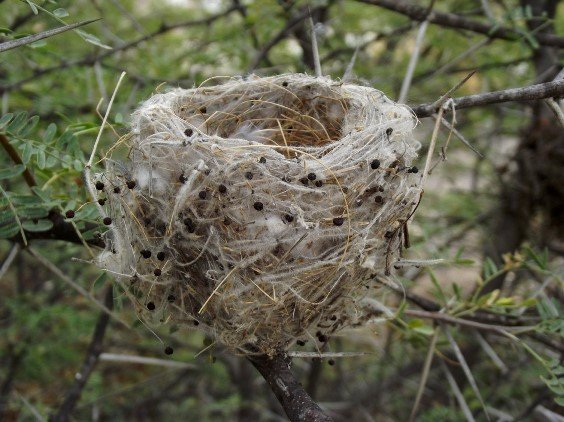Galium tomentosum stems serving as a Cape batis nest

Author: Ivan Lätti
Photographer: Louis Jordaan
This well-constructed Cape batis nest serves as a building material advertisement for the woolly stems of Galium tomentosum, the plant sometimes called velvet bedstraw.
The black seeds retained on the branches confirm that the benefits do not all accrue to the satisfied birds providing for a family, but also add value for the plant by way of dispersal of its seeds. The connection between the two species relates to reproduction in both cases.
In fact, it is believed that without birds dispersing the seeds, this plant would disappear from some of its established ecological niches, particularly in the Karoo and Little Karoo where it thrives. The merits of these soft, hairy stems are not lost on several other nest-building bird species.
The plant grows in several habitats in southern and central South Africa, while not in fynbos where the Cape batis is a regular resident. The same bird species builds nests using different materials as may be available where a particular couple happens to breed.
The Cape batis also uses spider web, lichen and plant material in building its nest. The nest has to be resilient, must last for six to seven weeks for raising the young of a particular year (Vlok and Schutte-Vlok, 2015; Shearing and Van Heerden, 2008; Leistner, (Ed.), 2000; Maclean, 1993; Dean and Fitzpatrick (1991): Galium tomentosum, a yarn for the birds. Veld and Flora, September, pp 82-83; iNaturalist; https://www.fernkloof.org.za).

